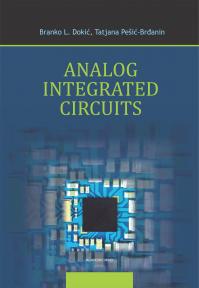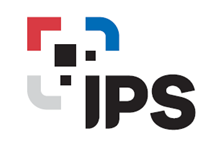Analog integrated circuits
OPIS KNJIGE:
Odlomak :
Preface
Based on the operating mode of transistor as a basic active element, mono-lithic integrated circuits are divided into digital, analog (linear) and mixed-signal circuits. In digital circuits transistors operate in switching mode, sothey are in either ON or OFF mode. Those modes represent bits. For practi-cal reasons, bits are marked as ”0” or ”1”. In the early years of digital elec-tronics, a bit sequence mostly represented numerical information, usually inbinary code. Binary vocabulary is considerably enriched by digitalization ofanalog signals like audio or video signals. To digitalize a signal means toobtain its samples in discrete time intervals which, if close enough, can beused as its perfect replica.
Digital integrated circuits process a digital signal, and analog processan analog signal. Analog signal is continuous over time and space. Whiledigital signal modes are very stable and mostly independent of parametersof integrated circuit elements, analog signal is highly dependent of physicaland electrical parameters of semiconductor devices. It is why the analogdesign is much more complex than digital one and requires intuition, rigorand creativity. Furthermore, analog integrated circuits use larger area activedevices than digital designs and are usually less dense in circuitry.
These are only a few reasons why the development and production of di-gital integrated circuits were much faster than analog. The explosive growthof digital electronics is based on computers and other digital systems widelyused today in very different areas of technology such as: automation, ra-dio and telecommunications, robotics, measuring techniques, entertainmentelectronics, automobile industry etc. The development and application ofdigital integrated circuits have a huge influence not only on development ofeconomy, science and technology but on human civilization in general. To-day we often say how everything is digitalized, and we even speak of digitalintelligence.
So where does the analog electronics belong? In the early 1980s many experts predicted the demise of analog circuits. However, the world as weexperience it is not digital at all, but continuous. Everything we hear, seeand feel in life is analog, from our voice, music, seismic movements, visualand biological perception, to the energy exchange. Since the physical worldconsists of signals in the continuous time domain, analog integrated circuitswill be needed in the foreseeable future. All digitalized electrical systemsmust possess an interface over the analog circuits. It is simply impossibleto imagine any life practical engineering solution without the help of high-performance analog integrated circuits. That is the reason why the marketfor analog integrated circuits is expanding every year.
The digitalization also enabled faster development of analog integratedcircuits, at least in two ways. Before the emergence of microprocessors inthe 1970s and the corresponding software for circuit analysis and synthesis,the analog integrated circuits were designed using manual calculations. Thatis why the complexity of those circuits, at the time, was limited to arounddozen transistors (operational amplifiers, comparators, analog multipliersand so on). In the early 1970s, the computer programs were written tosimulate analog integrated circuits designs with greater accuracy than prac-tical by manual calculation. The first circuit simulator was called SPICE(Simulation Program with Integrated Circuits Emphasis).
On the other hand, the more the digitalization entered therealworld, theneed for various high-performance analog integrated circuits was increasing.For example, when digitalizing physical signals, an analog-to-digital (ADC)and a digital-to-analog (DAC) converters are always needed. That is howmonolithic integrated circuits with mixed signal appeared. They are inte-grated circuits with processing of both analog and digital signals (ADC,DAC, smart sensors, digital signal processors DSP etc.) Modern devicesof consumer electronics are inconceivable without the mixed-signal inte-grated circuits. Interface and processing of analog signals includes the fol-lowing three groups of analog circuits or mixed-signal circuits and systems:power management (bias circuits, regulators, references, protection circuits),front-end interface (sensors, amplifiers, ADC, filters) and back-end interface(DAC, amplifiers, filters, power drivers).
The analog (linear) courses on many faculties, although addressing themicroelectronic technologies, are conceptually more based on discrete analogcircuits. Luckily, the basic principles that govern the analysis and designingof electronic circuits, are not nearly as prone to changes as technologies oftheir implementation. It the opinion of authors of this book, it is much morerational that these principles should be illustrated on examples of actual technologies, and only to address the specifics of nonstandard techniques.This book is the result of efforts to include the analog integrated circuitstechnology in general electronics course in the early phase of academic pro-cess. Numerous solved examples inside each chapter will help the students tograsp more easily the principles and laws behind the content of those chap-ters. Unsolved problems and questions at the end of each chapter shouldhelp the students to verify acquired knowledge.
The analysis of a circuit is based on manual calculations, therefore sim-plified small-signal transistor models are used. It is our objective that stu-dents understand the influence of key elements parameters on basic circuitcharacteristics. We assume that the students are previously trained to useSPICE simulator so detailed analysis of more complex circuits is plannedfor practical classes.
Development of analog integrated circuits from the beginning until to-day has passed several phases. Initially, these circuits were designed andmanufactured in bipolar technology that was followed by a rapid develop-ment of analog circuits realized in MOS technology. Afterward, a BiCMOStechnology, which combines bipolar and CMOS components on a single chip,emerged as a serious competitor and, recently, as a leader in analog inte-grated circuits production. In order to reduce the costs and power dissipationof the electronic systems, analog and digital circuits are often technologicallyintegrated, which provides strong economic motivation for usage of CMOScompatible circuits. Although in some cases the production of linear BiC-MOS circuits is more expensive, it allows the designer of analog integratedcircuits to utilize the best features of bipolar and MOS components in variousinnovative combinations of their characteristics. Also, BiCMOS technologyenables the reduction of design time, since it allows the direct use of a largenumber of existing cells for realization of the given analog functions.
In this book, both bipolar and MOS devices and circuits were describedin a way that is suitable for combining them later in BiCMOS technologieschapter. For engineers that will deal with the design of analog integratedcircuits, the knowledge of bipolar and MOS devices similarities and diffe-rences is of a great importance, which determines the selection of suitabledevices and topologies for the required circuit performance.
In the first chapter, a classification of integrated circuits with respect tocharacteristic parameters was described. Considering the fact that the ap-plication of integrated circuits became very complex in the last few decades,we outlined classifications with respect to technology and technique of pro-duction, scale of integration, operation mode, design methodology, and application of integrated circuits.
The second chapter is dedicated to the planar technology used for pro-duction of monolithic integrated circuits. All phases are explained in detail,and, in addition, modern processes that are found in individual phases weregiven.
Relationship between production technologies of integrated circuits andbasic devices was described in the third and fourth chapter. In the book, thebasic and advanced techniques for production of bipolar and MOS transistorsin silicon technology were given as well. The existence of parasitic elementsand structures was pointed out. It was shown how technological parametersand polarizations may affect the static and dynamic characteristics of bipolarand MOS devices. The second-order effects, which occur while bipolar andMOS transistor operating, were specially treated. Small-signal models thatare used in SPICE were given.
The fifth chapter is dedicated to the description of the development ofmodern bipolar and MOS transistors structures that emerge in nanometertechnologies and are used in RF electronics and telecommunications. Thecomparative characteristics of the technologies that are developed on sub-strates of different materials, as well as the characteristics of the transistors(MESFET, HEMT, HBT) that are developed in these technologies weregiven.
Topology and characteristics of basic circuits, which are used for de-sign of more complex analog integrated circuits, were described in the sixthchapter. Special attention was paid to constant current sources, differentialamplifiers, voltage amplifiers, voltage sources, voltage reference sources andoutput stages of integrated circuits. Peculiarities of each group of analogintegrated circuits mentioned above, as well as their possibilities and limita-tions, were pointed out. The topologies of these circuits in bipolar and MOStechnology were analyzed in parallel.
RF elementary circuits are described in Chapter 7.
Operational amplifier is the most popular analog integrated circuit. Con-sidering the variety of applications it is justly regarded as a device. In Chap-ter 8, general characteristics of operational amplifiers, with emphasis on thespecifics of particular types, were considered. The most commonly used op-erational amplifier 741 was analyzed separately, and its static and dynamicparameters were calculated and given in this chapter. CMOS two stage op-amps and CMOS transconductance amplifiers are also analyzed.
In Chapter 9, standard applications of operational amplifiers are described. Here, the op-amp is regarded not as circuit but as device. Alsodescribed are different configurations of op-amps as voltage or current ampli-fiers, voltage-to-current and current-to-voltage converters, analog arithmeticcircuits, linear and pulse oscillators, active filters and comparators.
In the Chapter 10, the basic principles of the voltage regulation andstabilization were explained, and then, general-purpose, three-terminal anddual-tracking integrated regulators were described. Special attention waspaid to current and thermal protection of regulators. Methods of applicationof regulators in various configuration of supply blocks.
There are often problems of comprehension of a text when authors arenot from the English speaking regions. Dr. Zoran Jakˇsi ́c has made effort todiminish this problem. The authors owe him sincere gratitude.
Banja Luka, March 2018
Authors
Cena: 5.940 rsd
potrebna količina:
Odaberite izdanje:
Kupci koji su kupili ovu knjigu kupili su i:

Cena: 1.980 rsd
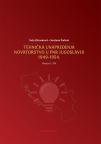
Cena: 2.200 rsd

Cena: 1.870 rsd

Cena: 2.530 rsd
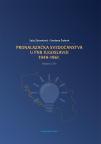
Cena: 2.750 rsd
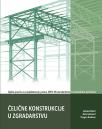
Cena: 15.400 rsd

Cena: 6.600 rsd
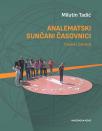
Cena: 1.100 rsd
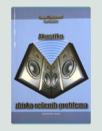
Cena: 660 rsd

Cena: 1.320 rsd

Cena: 780 rsd

Cena: 1.525 rsd
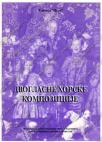
Cena: 264 rsd

Cena: 8.404 rsd
Knjige istog pisca

Cena: 18.300 rsd
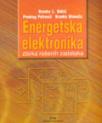
Cena: 1.980 rsd
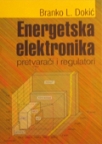
Cena: 4.510 rsd
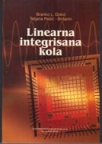
Cena: 2.750 rsd
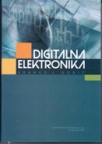
Cena: 3.300 rsd

Cena: 3.300 rsd

Cena: 13.200 rsd

Cena: 1.760 rsd













